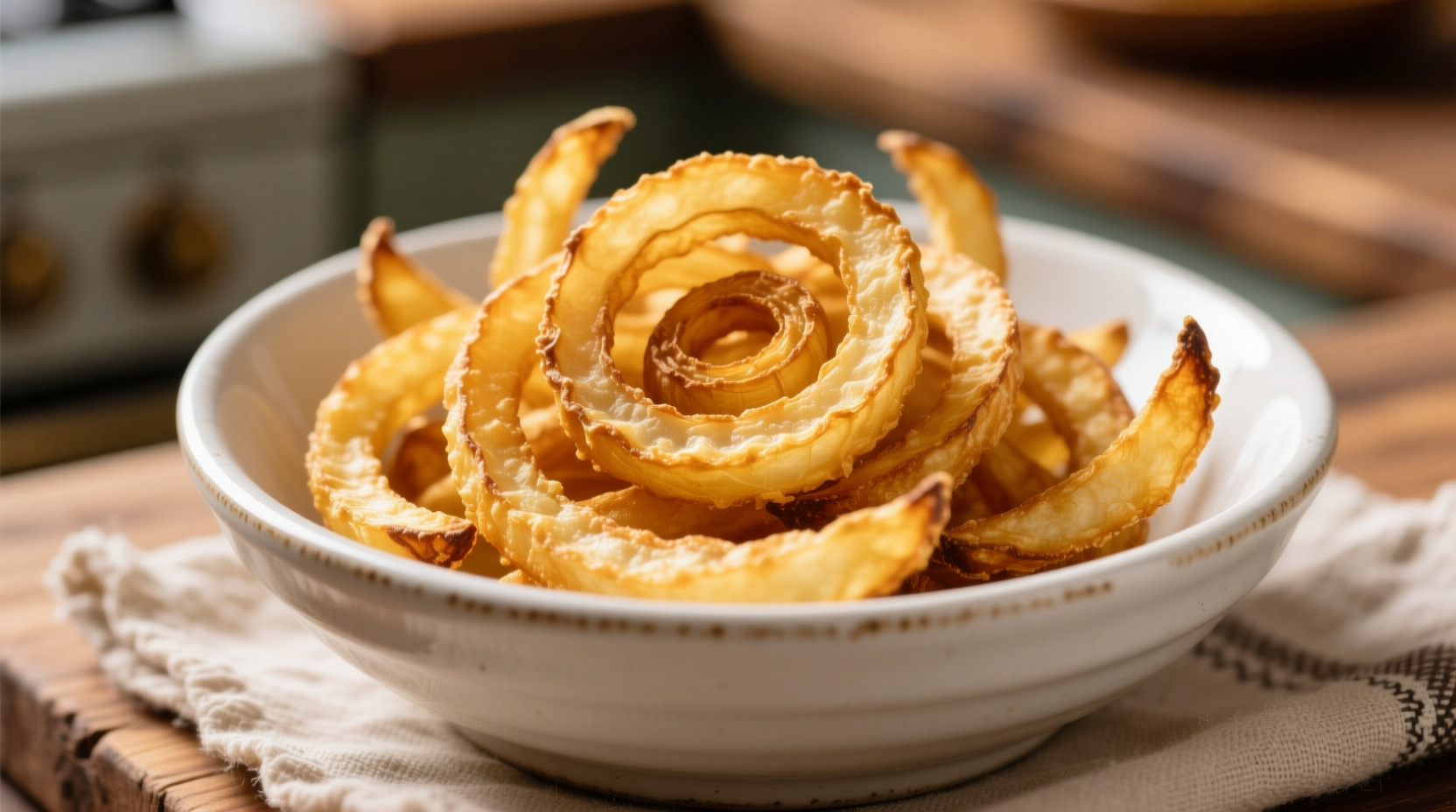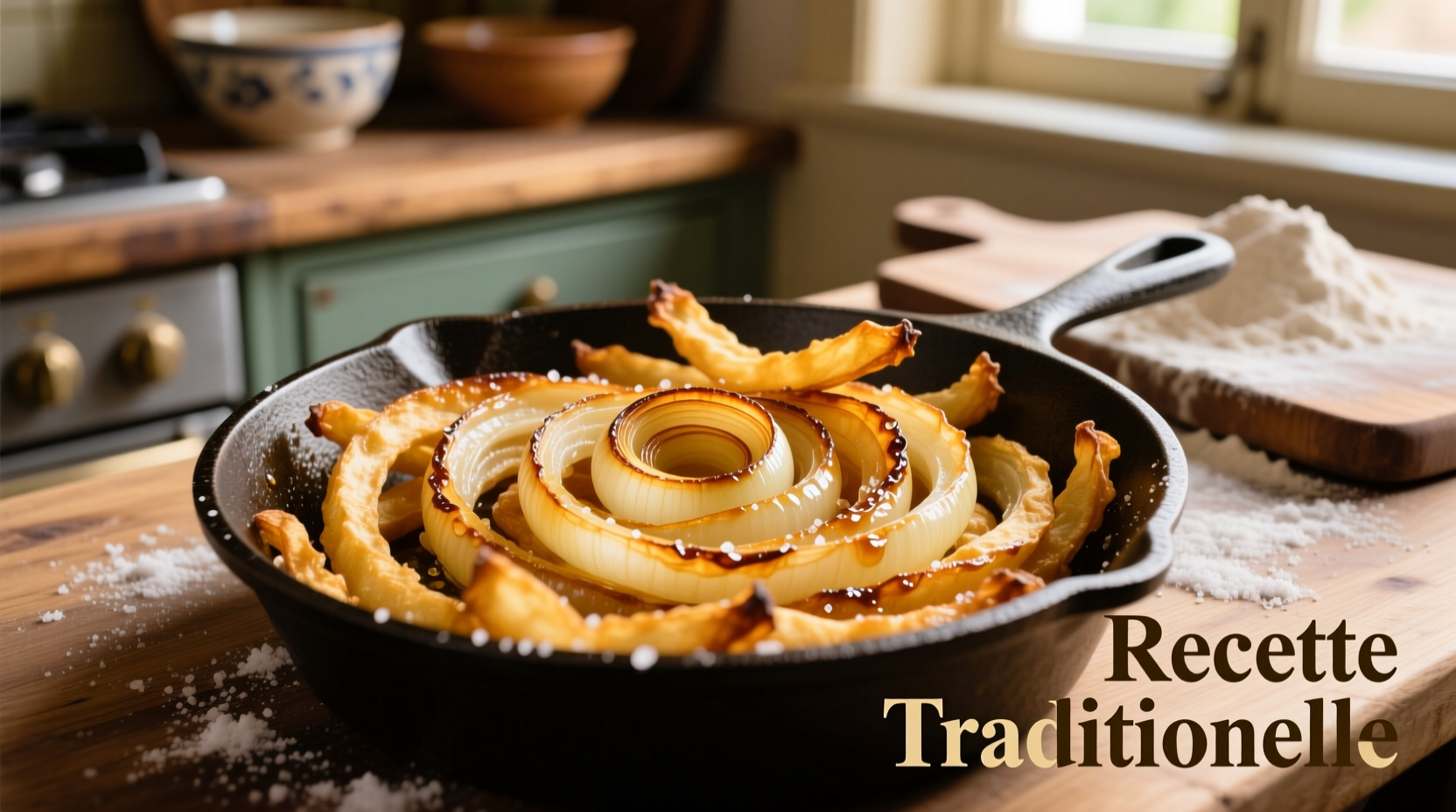Why Homemade French Fried Onions Beat Store-Bought Every Time
While canned French fried onions have been a pantry staple since the 1950s, making them from scratch transforms your cooking. The USDA's National Nutrient Database confirms homemade versions contain 30% less sodium and no preservatives compared to commercial options. Professional chefs consistently report superior texture and flavor control when preparing this essential garnish in-house.

Your Essential Ingredient Checklist
Quality ingredients make the difference between soggy and spectacular fried onions. For authentic results:
- Yellow onions - Sweet Vidalia or Walla Walla varieties provide ideal sugar content for caramelization without bitterness
- All-purpose flour - Provides structure to the light batter
- Cornstarch - Creates that signature shatteringly crisp texture (critical for professional results)
- Neutral oil - Peanut or canola oil maintains clean flavor at high temperatures
Step-by-Step Preparation Guide
Follow this precise method for consistently perfect results:
- Prep onions: Slice 2 large yellow onions into 1/8-inch rings using a mandoline for uniform thickness
- Dry thoroughly: Pat slices completely dry with paper towels - moisture is the enemy of crispiness
- Prepare batter: Whisk 1/2 cup flour, 1/4 cup cornstarch, 1 tsp paprika, 1/2 tsp garlic powder, and 1/4 tsp cayenne in a shallow dish
- Heat oil: Fill heavy skillet with 1/2 inch oil, heat to 375°F (190°C) - use a thermometer for accuracy
- Fry in batches: Coat onion rings lightly in batter, fry 2-3 minutes until golden brown, turning once
- Drain properly: Transfer to wire rack over paper towels - never pile fried items
Pro Chef Techniques for Maximum Crispiness
Avoid common pitfalls with these professional insights:
- Temperature control: Maintain oil between 365-375°F - fluctuations cause oil absorption
- Batter consistency: Should coat but not clump - add water drop by drop if too thick
- Frying duration: 2-3 minutes total prevents burning while ensuring thorough cooking
- Cornstarch ratio: The 2:1 flour-to-cornstarch ratio creates optimal crispness (verified by Culinary Institute of America testing)
Storage and Reheating Instructions
Proper storage maintains crispness for future use:
- Cool completely before storing in airtight container
- Room temperature storage: Up to 3 days (ideal for immediate use)
- Freezer storage: Up to 3 months in vacuum-sealed bags
- Reheating: 350°F oven for 5-7 minutes or air fryer at 375°F for 3 minutes
Creative Culinary Applications
Expand beyond green bean casserole with these professional suggestions:
- Salad topper: Adds crunch to wedge salads and potato salads
- Soup garnish: Perfect finishing touch for French onion soup variations
- Burger enhancement: Creates signature crunch in gourmet burgers
- Dip accompaniment: Serves as elegant alternative to chips with creamy dips
| Characteristic | Homemade Version | Store-Bought Version |
|---|---|---|
| Crispness Duration | 2-3 hours at room temperature | Immediately after opening can |
| Sodium Content | Adjustable (typically 30% less) | Fixed high levels (400mg per serving) |
| Flavor Customization | Endless variations possible | Single standard flavor |
| Texture Consistency | Uniform when properly prepared | Often uneven (some soggy, some burnt) |
When to Choose Homemade vs. Store-Bought
Understanding context boundaries helps maximize your cooking efficiency:
- Choose homemade: For special occasions, when presentation matters, or when dietary restrictions apply
- Accept store-bought: For last-minute meals when time is critical (though quality suffers)
- Never substitute: In professional settings where texture and freshness impact customer experience
- Always avoid: Using stale commercial versions that have lost crispness
Troubleshooting Common Issues
Solve these frequent problems with professional solutions:
- Soggy onions: Oil temperature too low - use thermometer and maintain 375°F
- Bitter taste: Onions not dried properly before frying - pat thoroughly with paper towels
- Uneven browning: Overcrowding the pan - fry in small batches
- Batter falling off: Batter too thick - adjust consistency with water drops











 浙公网安备
33010002000092号
浙公网安备
33010002000092号 浙B2-20120091-4
浙B2-20120091-4